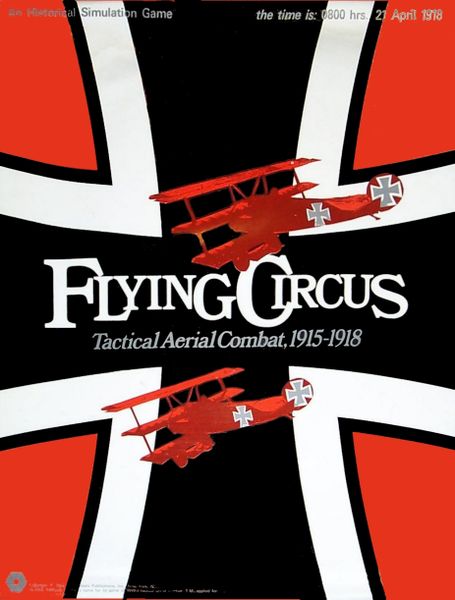Flying Circus: Tactical Aerial Combat, 1915-1918 (1972) Board Game
Flying Circus: Tactical Aerial Combat, 1915-1918 is a board game released in 1972 that allows players to engage in tactical aerial combat during World War I. Designed by Jim Dunnigan and featuring artwork by SPI (Simulations Publications, Inc.), the game aims to recreate the intensity and strategy of aerial battles from that era.
Game Components of Flying Circus: Tactical Aerial Combat, 1915-1918
How To Setup Flying Circus: Tactical Aerial Combat, 1915-1918
To set up the game, players first choose a scenario, which defines the aircraft available for each side. Each player receives the corresponding aircraft counters and sheets. The hex grid map is laid out, and players position their aircraft according to the scenario’s starting conditions. The game includes detailed instructions for setting up each scenario, ensuring that the initial conditions are accurately replicated.
Gameplay Mechanics and Game Objective
Player Experience
**Flying Circus** offers a dynamic and challenging experience, especially for fans of historical aerial combat. The game is designed for 2-6 players, with each side controlling either Allied or German aircraft. Scenarios can range from quick half-hour engagements to more complex battles, providing a variety of gameplay experiences.
Pros
Cons
Personal Thoughts on Flying Circus: Tactical Aerial Combat, 1915-1918
This game is ideal for wargaming enthusiasts and those interested in historical aviation. Despite its age, **Flying Circus** remains a delightful tactical air war game, offering a unique blend of simplicity and realism. However, due to its vintage status and the presence of some flawed scenarios, it may not appeal to all modern gamers. For collectors and historical wargame fans, though, it is a gem worth uncovering.
We are supported by our audience. When you purchase through links on our site, we may earn an affiliate commission, at no extra cost for you. Learn more.

